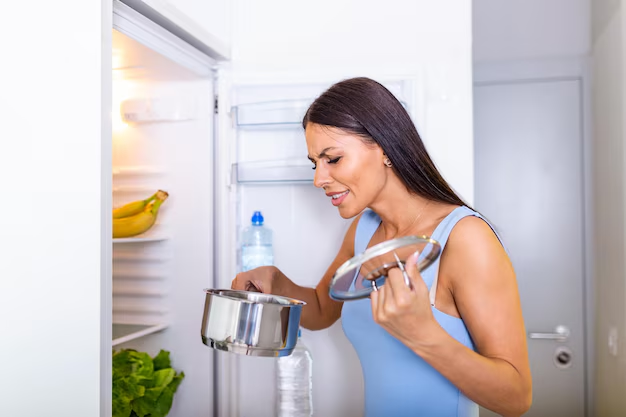What Temperature Should Your Refrigerator Be Set To? An In-Depth Guide
Opening your refrigerator is often an act of routine: grabbing ingredients for dinner or a cold beverage on a hot day. Yet behind this mundane task lies a critical question that can impact food safety, energy efficiency, and even your wallet—what temperature should your refrigerator be set to? Understanding this seemingly simple setting can make all the difference, ensuring your perishables stay fresh and your energy bill stays in check. 🌡️
Why Temperature Matters
Food Safety First
Keeping your food fresh isn't just a matter of convenience; it's also a matter of safety. The appropriate temperature for a refrigerator plays a crucial role in preventing the growth of harmful bacteria. These microorganisms thrive in the so-called "danger zone," which ranges between 40°F (4°C) and 140°F (60°C). A refrigerator set above this range can quickly turn into a breeding ground for bacteria, posing health risks. Setting your fridge at the right temperature ensures that food safety standards are met, keeping your family safe from foodborne illnesses.
Optimize Energy Use
Temperature isn’t just about keeping food safe—it’s also about energy use. A refrigerator that runs too cold might be keeping your food cool, but it's also likely using more electricity than necessary. Striking the right balance can lead to energy efficiency, reducing your environmental footprint and saving money on electricity bills.
Ideal Temperature Settings
Recommended Temperature Range
According to general expert consensus, the ideal temperature range for a refrigerator is between 35°F (1.6°C) and 38°F (3.3°C). This range prevents the growth of bacteria while avoiding the freezing of water-rich items like fruits and vegetables. Setting your refrigerator within this sweet spot maximizes the freshness and longevity of your perishable items.
Freezer Settings
While this article focuses on refrigerator settings, it's worth noting that your freezer also requires careful attention. The ideal temperature for a freezer is typically around 0°F (-18°C). This setting ensures that your frozen foods remain at their peak quality and are safe to consume.
Practical Considerations: Different Fridge Types
Built-in vs. Freestanding
The type of refrigerator you own can also affect the optimal settings. Built-in models often have different airflow and cooling mechanisms compared to freestanding units. Consulting your appliance's manual to confirm settings specific to your refrigerator model is a smart move.
Multi-Zone Refrigerators
Some modern refrigerators come equipped with separate compartments for different types of food, each requiring unique temperature settings. Utilizing these specific zones can optimize freshness, especially for delicate items such as leafy greens or dairy products.
Factors Influencing Refrigerator Temperature
Frequency of Door Opening
The more you open your refrigerator, the harder it has to work to maintain its internal temperature. This is particularly true in a busy household. Minimizing the frequency and duration of door openings can help keep your refrigerator running efficiently.
Stock Levels
A refrigerator that's too empty or too full can affect cooling efficiency. A well-stocked fridge maintains a stable temperature better than an under-filled one. However, overstocking can restrict airflow, leading to uneven cooling. Finding a balance is key to optimal performance.
Maintenance Tips for Optimal Performance
Regularly Check Seals
The seals on your refrigerator doors are vital for keeping the cold air in and the warm air out. Inspect these seals regularly for wear and tear. Replacing any damaged seals can lead to improved energy efficiency.
Clean the Coils
The coils, usually located at the back or beneath the unit, help dispense heat. Dusty or dirty coils can hinder this process, making your refrigerator work harder and expend more energy. Cleaning the coils periodically ensures your appliance runs smoothly.
Monitor With a Thermometer
Even modern refrigerators can get off track with temperature settings. Using a simple appliance thermometer can help verify that your refrigerator maintains the right temperature. Place the thermometer in the center of the refrigerator for the most accurate reading.
Common Misconceptions
Colder Isn't Always Better
One common misunderstanding is that the colder your fridge, the better. However, temperatures set too low can lead to frozen produce, altered food texture, and increased energy consumption. Sticking to the recommended temperature range avoids such issues.
One Setting Fits All
Many believe that a single temperature setting is sufficient for all compartments within the fridge. Multi-zone refrigerators often have varying temperature needs that a single setting can’t address. Understanding these differences can improve food quality and longevity.
Visual Summary: Key Takeaways
Here’s a handy summary table to bookmark for your kitchen:
| Key Aspect | Tip or Recommendation |
|---|---|
| Ideal Refrigerator Temp | 35°F to 38°F (1.6°C to 3.3°C) for optimal food safety |
| Ideal Freezer Temp | 0°F (-18°C) for maintaining frozen food quality |
| Energy Efficiency | Maintain temperature settings to save on energy costs |
| Door Seal Maintenance | Regularly check and replace damaged seals for performance |
| Temperature Monitoring | Use a thermometer to ensure correct settings |
| Door Opening Frequency | Limit openings to maintain consistent temperature |
| Coil Cleaning | Clean coils to improve efficiency and longevity |
| Stock Levels | Avoid overfilling or sparse stocking for better airflow |
Closing Thoughts
Achieving the perfect refrigerator temperature might seem trivial, but it plays an essential role in daily life, ensuring food safety and energy efficiency. Prioritize these settings and maintenance practices to get the most out of your appliance. Whether solo-living or managing a bustling family, striking the right balance in refrigerator temperature transforms daily convenience into a seamless, worry-free experience.
Remember, keeping your refrigerator properly set is not just a step towards efficient living; it's also about ensuring the safety and health of your loved ones. Trust in these guidelines to help maintain a kitchen that is both smart and safe. 🌟
